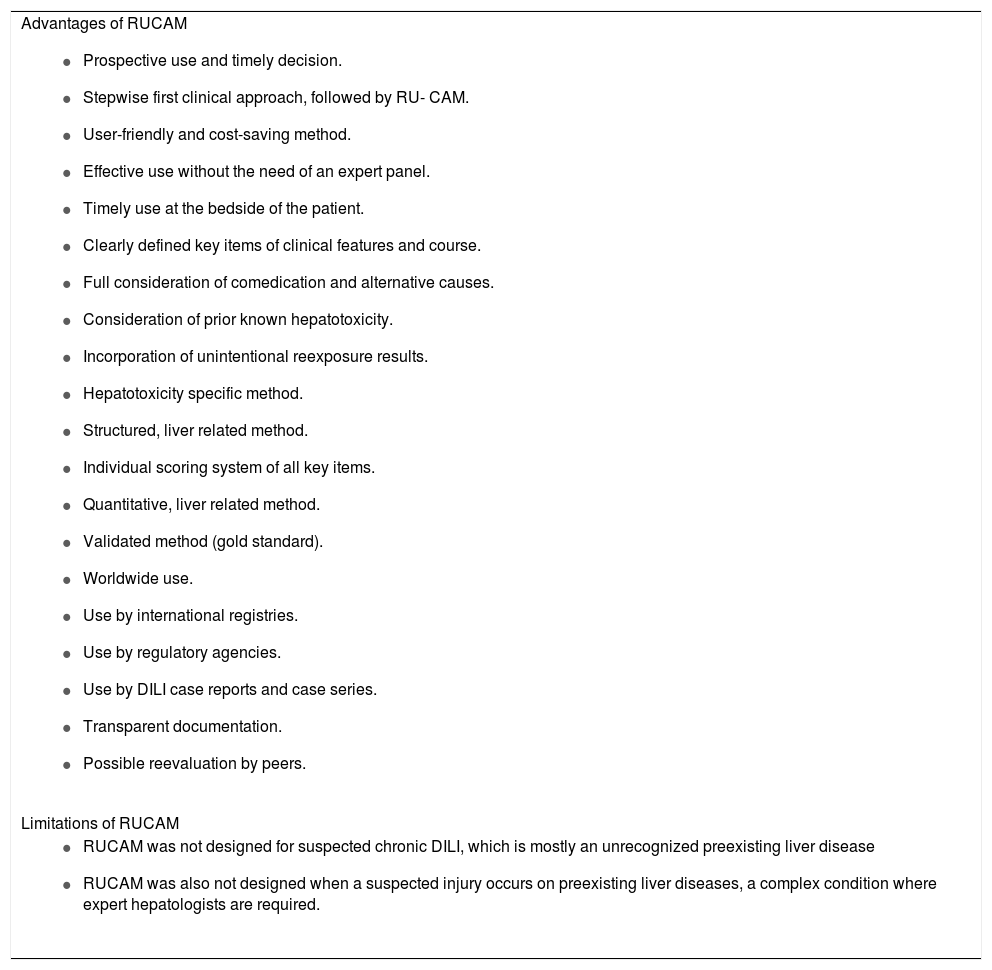One of the highlights of this issue of Annals of Hepatology is the analysis of DILI cases from India by Rathi, et al., since all cases were prospectively evaluated with RU-CAM, the widely used tool for causality assessment worldwide. This approach provided valuable well-established results on various aspects of DILI.
The study of Rathi, et al.1 from the Department of Gas-troenterology of the Lokmanya Tilak Municipal Medical College and General Hospital in Sion, Mumbai, Maharashtra in India is an outstanding report on drug induced liver injury (DILI) and will serve as a paradigm how future cases of DILI should be analyzed and prepared for publication. Their careful analysis of a 2-year single center prospective cohort study illustrates the challenging aspects of DILI and especially causality assessment.
The authors Rathi, et al.1 decided to use prospectively the Roussel Uclaf Causality Assessment method (RU-CAM), a structured, standardized diagnostic approach specific to liver injury established in 19932,3 and updated in 2016.4 Since its launch 25 years ago, RUCAM has been the most applied causality assessment method (CAM) for DILI and herb induced liver injury (HILI) worldwide, as evidenced by the high numbers of published epidemiological studies and case reports using this method.4 Consequently, RUCAM-based results in India1 can easily be compared with those obtained in other countries such as Iceland,5 Spain,6 or China.7
Because the Indian study was a prospective cohort study, the suspected DILI cases were well defined and a complete case data collection as well as causality assessment were possible while the patient was still under medical care.1 The prospective use is one of the cornerstones of RUCAM and strongly recommended.4 Indeed, complete case data in the Indian study resulted in high RU-CAM scores and thereby high causality gradings among 90 patients.1 Causality was probable in 63/90 cases (70%), highly probable in 15/90 cases (18%), possible in 4/90 cases (5%), and unlikely or excluded in 8/90 cases (9%).
The prospective use of RUCAM ensured early recognition of alternative causes in 8 cases of the Indian cohort study: Acute hepatitis E virus (HEV) in 3 patients, autoimmune hepatitis in 2 patients, and hepatitis A, B, and sar-coidosis in 1 patient each.1 HEV exclusion was systematically included in the investigations not only because HEV is endemic in India, but also because such exclusion is mandatory in any suspected DILI or HILI cases.4,7-15 This study confirmed that alternative causes can be excluded only if the patients are correctly investigated at the early phase of the liver injury DILI3,8,9 or HILI.10-15
Most importantly, the Indian study convincingly demonstrated that for complete DILI case evaluation a prospective approach is feasible that includes the use of RUCAM with its many advantages (Table 1) as compared to other CAMs.4 Such prospective approach provides reliable results without the need of large costly DILI networks, dependent on subjective expert opinion.
Advantages and limitations of RUCAM.
Advantages of RUCAM
|
| Limitations of RUCAM |
|
The study of Rathi, et al.,1 although mainly based on cases due to antitubercular drugs, antiepileptic drugs, herbal complementary and alternative medicines, confirmed that DILI leads to overall mortality of 16% that could be predicted at the time of DILI recognition by the presence of jaundice and encephalopathy, and at one week by the presence of encephalopathy, high MELD score, and elevated alkaline phosphatase. These independent risk factors are those related to the severity of the liver injury due to any offending drug and need to be confirmed by other studies in different countries.
Potential Competing InterestsNone.










